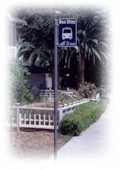| |
  |
| Feature Articles: Ciizens Want Teeth In Environmental Laws Fight Global Warming: Create Jobs and Benefit the EconomyClimate Control Would Save Millions Of Lives Build It And They Will Ride Recycled Glass Applications Expand Mass Transit Critical to Chattanooga's Turnaround
|
"These terrific ridership gains are proof positive that if we invest in public transportation, more and more Americans will get on board," said William W. Millar, President of the American Public Transit Association. "That's good news for all of us. More people riding transit means fewer cars on the road, less congestion and cleaner air. It all adds up: increased funding will mean a better quality of life for all Americans."
Major increases occurred for light rail systems in Dallas and Memphis and for rail systems in Los Angeles and between Philadelphia and Harrisburg. Most of the increases at these systems resulted from opening new extensions or expanding service during the last year. Total bus ridership in the U.S. continued its comeback, rising 3.3% in 1997. For the fourth quarter, bus ridership was up 4.5%, compared to 3.3% in the third quarter, 2.5% in the second quarter, and 1.4% in the first quarter. For larger bus systems, Houston, New York City Transit, Orange County, CA, and St. Louis achieved increases of 5.0% or more.
Many smaller bus systems reported yearly increases of more than 10 percent.
They include: Boone, NC; Burlington, WA; Charleston, SC; LAKETRAN in
the Cleveland area; Detroit's SMART, Flint, MI; Fresno, CA; Great Falls,
MT; Connecticut DOT's Hartford service; Las Vegas, NV; Foothill Transit
and Santa Clarita Transit in the Los Angeles area; Lubbock, TX; Lyons,
NY; New Castle, IN; Norfolk, VA; Orlando, FL; Owensboro, KY; Oxnard,
CA; Peoria, IL; Redding, CA; Salem, OR; San Bernardino, CA; San Diego's
Metropolitan Transit Development Board suburban service; Livermore,
CA in the San Francisco area; San Juan, PR; State College, PA; Stockton,
CA; Vancouver, WA; Visalia, CA; and Prince George's County in the Washington,
DC area. |
|
EcoIQ Magazine HOME
| Feature Articles | News Briefs |
Resources |
Reviews | Opinion EcoIQ.com Site Home | EcoSpeakers.com | EcoSpeakers Bookstore | EcoIQTV.com © Copyright 1998 EcoIQ |




